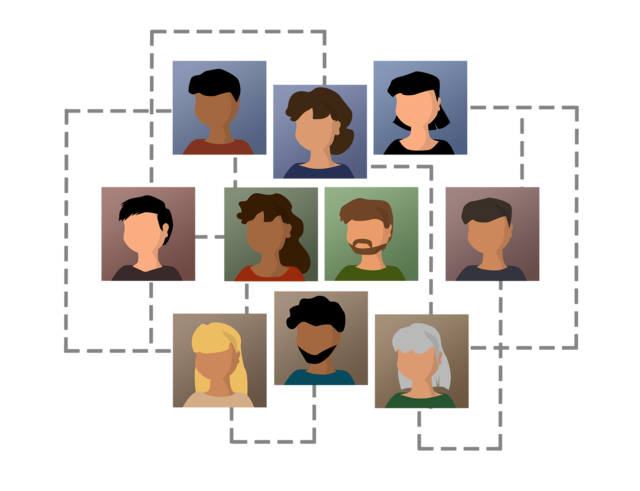Recruiting for M&E Tech: Mind the Generation Gap
With a skills crisis looming, recruiting, developing, and retaining younger talent is becoming critical for the M&E industry

The media and entertainment industry is on the brink of a skills shortage due to a generational transition. A mass retirement of veteran broadcasting engineers is underway. Not only is there a shortage of younger talent coming in to replace them, but those who do join the sector don't possess the same skill set as their predecessors — a result of the industry's rapid shift towards digitization.
As broadcast technology companies like Imagine Communications increasingly focus on cloud-based services and software-centric platforms, our talent requirements have become more diverse. While the demand for traditional broadcasting skills hasn’t vanished — after all, we operate in a hybrid sector — we now also require new competencies, which are often found outside our traditional talent pools.
Skilling up
The recruitment of cloud architects and software developers, often from the IT sector, has become essential. But recruits coming from outside the industry face a steep learning curve, as the world of 24/7 broadcasting is quite different from their previous experience.
For example, while latency of a few microseconds might be expected with IT infrastructures, it is considered unacceptable in a broadcast setting. In addition, with advertising and subscription revenues attached to programming, the demands on video quality are much higher. Ideally, the disconnect would be addressed at the university level, where this new brand of talent could become accustomed to the broadcast environment before they begin their careers. However, to help those currently entering the industry get their sea legs, training is the best alternative.
Fortunately, the media and entertainment industry doesn’t suffer from a lack of training resources. Organizations like the IABM and AIMS offer a number of opportunities for sharing and receiving knowledge. And many of today’s training courses have transformed from a purely engineering focus to accommodate the growing demands of various streaming platforms, broadcast areas, and a multitude of applications.
To attract younger talent, the industry as a whole needs to reinvent its image to create excitement around all aspects of media and entertainment."
The real issue is a lack of awareness as to what’s available. As a result, broadcast technology providers are underutilizing the very resources they need to help bring new talent up to speed on core skills. Conversely, there are some newer skills — all of which have become highly important to the media and entertainment industry — that aren’t receiving the attention they require, including cybersecurity, IP, and cloud architectures.
Another approach to expanding the skill set of new talent is to have them learn on the job. However, as broadcasters continue to reduce the staff they rely on for systems operation — leaving fewer employees and little time to work with new recruits — this once-common practice has become increasingly scarce for technology providers.
Meeting Expectations
Of course, the need to train and educate new talent hinges entirely on successfully recruiting that talent in the first place, which can no longer be taken for granted in today’s highly competitive landscape ― especially when it comes to a younger generation with different expectations. And towards the top of the list of expectations is the ability to work remotely, which is no longer considered a luxury in a post-Covid world. To compete, it is imperative that broadcast technology companies offer recruits this flexibility.
Furthermore, to attract younger talent, the industry as a whole needs to reinvent its image to create excitement around all aspects of media and entertainment. It’s not hard to imagine the thrill of being an engineer in an OB truck, on-site and actively taking part in a live event like the Super Bowl. It’s more challenging to bring that same level of excitement to less glamorous areas of the industry, like over-the-top (OTT) TV, monetization, digital advertising, and others.
But the work we all do together is, in fact, exciting. Everyone in the industry plays a role in keeping people around the world entertained and informed, day in and day out; we just need to find a better way to market that message to recruits. We also need to do a better job of promoting diversity and inclusion, which will not only provide access to untapped potential but will bring in fresh perspectives and voices to help our industry evolve.
Recruiting and Retaining
One thing to keep in mind with recruitment is that it’s a long process, which can certainly affect the capacity and capabilities of short-staffed broadcast technology companies in the interim. And even if a candidate accepts a position one day, they may change their mind the next, leaving the hiring company in the lurch. To avoid these interim periods, or the need to start from scratch if a preferred candidate falls through, it’s critical to build a talent pipeline that can be called on when needed. And the best time to build this pipeline is well before it’s needed.
Once talent is successfully recruited, the next challenge is retaining it, which requires a multi-faceted approach. Broadcast technology companies must adapt their communication tools to foster a more collaborative environment more suitable for remote work. They also need to rethink how they measure employee performance, with an eye on moving away from traditional evaluations to more scientific metrics that reflect the specific roles and tasks of their diverse workforce.
At Imagine Communications, we’ve observed that employees that depart after a few years tend to be our more recent hires."
Moreover, context and meaning have become vital aspects of the work environment for the younger generation. They aren’t content with focusing solely on their immediate tasks; they want to understand how their work is contributing to the larger picture, both within the company and externally. They are looking for a sense of purpose and connection to their work, and technology vendors must accommodate this need.
Yet, even taking these steps, staff turnover will remain a concern. At Imagine Communications, we’ve observed that employees that depart after a few years tend to be our more recent hires. There is a generational shift at play here, with the younger workforce often looking for new opportunities after a couple of years, unlike the long-term commitment we’ve often seen from broadcast engineers. As we move forward, it’s unlikely that we will see new recruits staying with the company for decades, which used to be common practice.
Preserving the Arts
There isn’t an exact timeline for when companies in the media and entertainment industry will begin to see serious day-to-day operational problems in terms of personnel. But it is clear that we must embrace new strategies for talent development, recruitment, and retention to avert a significant skills crisis.
Automation and technological advances will certainly help by reducing the need for personnel, including on-site for live events, which has become a pressing issue since the exodus of freelancers during the pandemic. However, as an industry, we need to balance these advancements with the maintenance of core broadcasting skills and ensure that they don’t become lost arts.
Get the TV Tech Newsletter
The professional video industry's #1 source for news, trends and product and tech information. Sign up below.
Dr. Glodina Connan-Lostanlen is Chief Process Officer for Imagine Communications. In this role, Glodina is responsible for Human Resources, the Process Management Office and Sales Operations, with a key focus on change management.
During her 20-year tenure with the company, Glodina has held a variety of senior executive roles in Global Sales, Strategy, and Marketing and was recently Chief Operating Office of the Playout and Networking portfolio.

